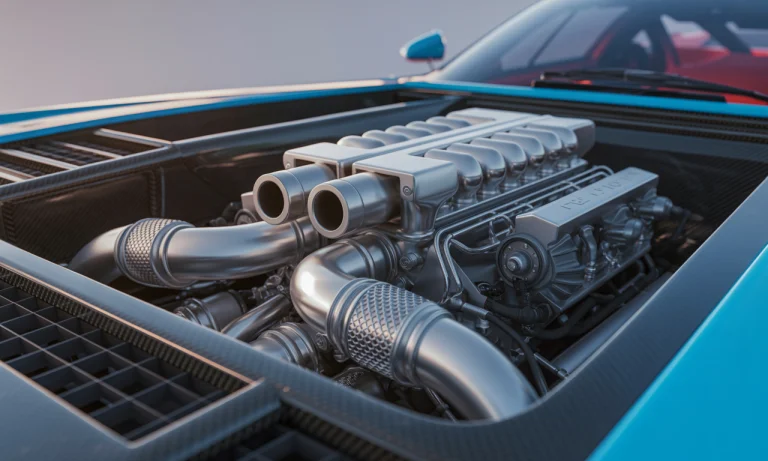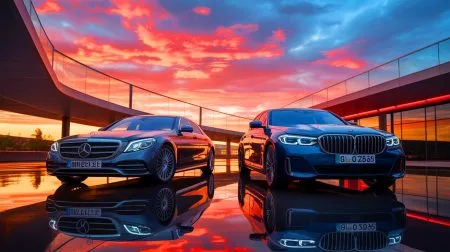Behind the world’s most thrilling automotive experiences lies a singular heartbeat: the high-performance engine. From the sonorous bellow of a Porsche boxer engine slicing through the autobahn, to the relentless force unleashed by a Bugatti’s quad-turbo W16 on the tarmac, these mechanical marvels shape legends. They’re not merely feats of engineering—each one is a statement, forged in competition and refined on circuit and street. Whether it’s the fierce rivalry between Ferrari and Lamborghini, or the precision tuning that defines BMW M and Mercedes-AMG, high-performance powerplants ignite the passions of drivers and engineers alike. Their secrets? Advanced materials, intricate tuning, and relentless innovation, designed to awaken every sense at the press of a pedal. As electric performance motors from McLaren or Audi Sport join the fray, the definition of “high-performance” continues to evolve, pushing boundaries while captivating enthusiasts old and new.
Engineering Genius: How High-Performance Engines Stand Apart
Take a stroll through the paddock at any major motorsports event, and you’ll notice more than decals or bodywork—you’ll sense the anticipation for that first engine roar. High-performance engines, like those in an Aston Martin Vantage or Nissan NISMO GT-R, aren’t just built—they’re orchestrated. An intricate dance of lightweight alloys, custom camshafts, precision fuel systems, and high compression ratios delivers heart-pounding acceleration and agility, while robust forced induction technologies—superchargers or turbochargers—multiply power within a compact footprint. Compare these specifications with mass-market vehicles, and the differences leap off the spec sheet: greater horsepower per liter, elevated redlines, and meticulously calibrated ECUs. Modern designs integrate enhanced cooling systems—essential in sustaining extreme outputs lap after lap. Each engine, whether a twin-turbo V6 from McLaren or V8 from Mercedes-AMG, is a bold exhibition of purposeful excess and thoughtful restraint.
Inside the Anatomy: Materials, Airflow, and Power Delivery
Consider the birth of a Ferrari V12: forged pistons, titanium connecting rods, and carbon-fiber intake plenums come together with absolute precision. Unlike conventional mills, these engines are obsessed with the minutiae—reducing internal friction, optimizing air-fuel mixture, and extracting every ounce of torque at high revs. Airflow is a sacred tenet; sophisticated intake and exhaust systems, like those discussed in depth here, remove bottlenecks, ensuring power delivery remains smooth and instantaneous. It is this relentless pursuit of efficiency and output that lets a Lamborghini Huracán’s V10 sing at 8,500 rpm with perfect composure. Even the lubricants and coolants selected—often explored among enthusiasts at sites like this one—are optimized for peak protection and minimal drag.
| Brand | Engine Type | Key Features | Performance Highlight |
|---|---|---|---|
| Ferrari | V12/Naturally Aspirated | Titanium rods, high-revving, precision intake | 820 hp @ 9,500 rpm (812 Superfast) |
| Lamborghini | V10/Naturally Aspirated | Lightweight alloys, advanced cooling | 631 hp @ 8,000 rpm (Huracán EVO) |
| Porsche | Flat-6/Turbocharged | Boxer layout, low CG, twin turbos | 650 hp (911 Turbo S) |
| Bugatti | W16/Quad-Turbo | Four turbochargers, 64 valves | 1,600 hp (Chiron Super Sport) |
| McLaren | V8/V6 Twin Turbo Hybrid | Hybrid assist, dry sump, carbon plenum | 1,070 hp (Artura Hybrid) |
Distinctive Technologies Powering Modern High-Performance Engines
Every brand—be it Audi Sport’s RS lineup, Mercedes-AMG’s “One Man, One Engine” philosophy, or BMW M’s track-inspired inline sixes—embraces unique solutions to performance challenges. Turbos have become smaller and spool quicker, catalyzed by electric-motor ‘boosters’ that erase lag. Camshafts, once dictated by mechanical limits, now adjust themselves in milliseconds via electronic actuators. Performance ECUs meanwhile orchestrate combustion with military precision, balancing emissions with uncompromised punch. Cars like the BMW M5 or Audi RS7 routinely use launch-control systems derived from F1 technology, presenting everyday drivers with the sort of exhilaration once only available on pit lane.
Case Study: The Evolution from Combustion to Electric Power
Consider the paradigm shift witnessed by the arrival of electric performance motors. Where McLaren used to rely entirely on combustive fury, models like the Artura now combine turbocharged efficiency with instantaneous electric torque for a whole new breed of acceleration. Audi Sport’s e-tron GT and Porsche’s Taycan Turbo S prove every bit as thrilling, harnessing 800-volt architecture and advanced cooling for repeatable launches. Maintenance, however, takes on a different shape—as outlined in detail here—with less mechanical complexity but heightened need for battery management and thermal regulation. This transition amplifies an old truth: true performance comes from relentless adaptation.
| Engine Type | Air Induction | Max RPM | Throttle Response |
|---|---|---|---|
| V8 Bi-Turbo (Mercedes-AMG) | Twin Turbo, Intercooler | 7,200 | Immediate (Dynamic Selection) |
| Flat-6 Turbo (Porsche) | Twin Turbo, Variable Intake | 7,100 | Ultra Sharp |
| Inline-6 Turbo (BMW M) | Twin Turbo, DOHC | 7,200 | Sport+ Optimized |
| Electric Motor (Audi e-tron) | NA (Electric) | 16,000 | Instant |
Pushing Limits: Tuning, Upgrades and Real-World Challenges
A car enthusiast named Leo, the proud owner of a Mercedes-AMG GT R, embodies the modern pursuit of performance. After years of track days, he decided to rework his machine with a performance air intake, exhaust, and custom ECU tuning. The gains? More power, yes—but also increased fuel consumption and a demand for premium lubricants, as noted in articles like this one. Leo’s journey illustrates a universal truth: enhancements deliver ecstasy, but bring responsibilities. High-performance components are best paired with upgraded suspensions, brakes, and reinforced transmissions to channel newfound strength effectively. Navigating maintenance, as described here, is equally critical—neglect leads to compromised reliability, no matter the badge on the hood. Balance is the ultimate key; after all, what’s the use of blistering speed if the machine can’t endure it?
Ownership Realities: Cost, Care, and the Joy of the Drive
For every moment of pure acceleration, engines like those found in a Nissan NISMO Z or Aston Martin Vantage demand their due. Maintenance intervals shrink, fuel bills soar, and specialized service becomes the norm rather than the exception. According to the breakdown here, cost of ownership now becomes part of the identity of performance cars, whether you drive a roaring V8 or an electric powerhouse. Still, the trade-off is one most are willing to make: the symphony of pistons, the turbine’s whistle, or the silent surge of motors—each episode on the open road is worth every sacrifice, every careful mile, every late-night garage session spent searching for perfection. To those who have felt that singular thrill, it is nothing less than the soul of the automobile.
Understanding High-Performance Engines: Answers from the Workshop
What features distinguish a high-performance car engine?
The primary hallmarks include lightweight, durable materials, higher compression, advanced forced-induction systems, custom-tuned fuel and ignition, robust cooling, and razor-sharp throttle responses—hallmarks best exemplified by brands like Ferrari, Lamborghini, and Porsche.
Are turbocharged engines always high-performance?
While turbocharging boosts output, true high-performance status also requires supporting upgrades throughout the engine and drivetrain. Without these, gains will be limited and reliability challenged.
Can you convert a standard engine into a high-performance one?
Through upgrades—performance intakes, exhaust, forced induction, and ECU tuning—a standard engine can rival specialist models, provided the supporting systems are equally improved, as detailed here.
How do maintenance needs differ on high-performance engines?
Such engines demand frequent attention: premium oils (full guide), regular tuning, and soonest repairs to keep them singing.
Is switching to electric a better alternative for performance fans?
Electric motors, now featured by McLaren and Audi Sport, deliver torque instantly and require less frequent mechanical maintenance. However, the tactile, emotive qualities of combustion engines remain unmatched for many. Find more considerations here.
Did you like it? 4.5/5 (22)






